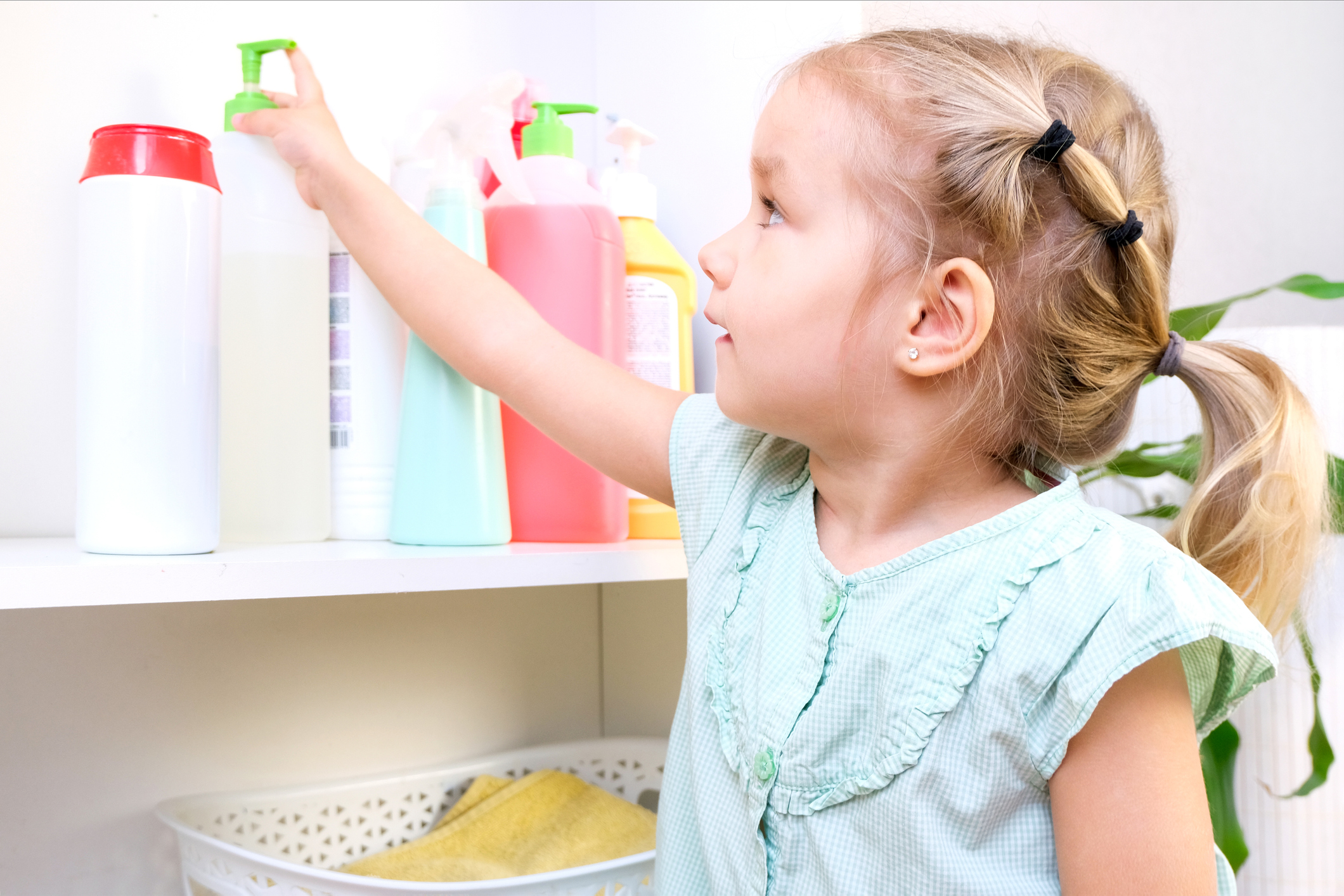
As winter comes to an end, your to-do list may include some customary spring cleaning. And did you know the first day of spring this year – March 20 – was also the first day of National Poison Prevention Week? With this in mind, let’s look at how we all can tidy up for poison prevention’s sake and keep our loved ones, especially our children, safe.
Established in 1961, National Poison Prevention Week aims to raise awareness of poison dangers and promote community involvement in poisoning prevention. The threat of poisoning is real:
- Poisoning is the leading cause of injury death in the United States, according to the National Center for Health Statistics.
- U.S. Poison Control Centers responded to more than 2 million human poison exposure cases in 2020, according to the American Association of Poison Control Centers’ National Poison Data System (NPDS).
- Of these exposure cases, 93 percent occurred in the home, and 77 percent of cases resulted from accidental exposure.
Health hazards that hide in plain sight
“Accidental poisonings are a leading health problem,” says Summit Health pediatric and adolescent medicine physician Christie Yi, MD. Dr. Yi notes that a significant portion of reported cases in 2020 (42 percent) are children ages 5 and younger.
“Young children and especially toddlers instinctually put everything they can grasp into their mouths,” says Dr. Yi. Therefore, a child’s natural curiosity may cross paths with leading substance exposure risks, including:
- Cosmetics and personal care products
- Household cleaning products
- Analgesics (pain relievers) and other medicines
- Home and auto products such as antifreeze, gasoline, kerosene, lamp oil, pesticides, and wiper fluid
- Recreational substances such as liquid nicotine
“If you have a young child or a child visiting your home on a regular basis, keep these substances in their original packaging in locked cabinets or containers out of reach and sight,” says Dr. Yi. “Safety latches should be placed in every cabinet before a child begins to crawl or walk.”
Dr. Yi also highlights specific products that can be especially attractive – and dangerous – to young children: those that look like “candy.”
“Detergent packets, pills of any kind, button batteries, bath salts, and edible marijuana are the main culprits,” she explains. “Do not rely on ‘child-resistant packaging’ to keep your child safe.”
While many substance types listed above also pose a risk for older children and adolescents, the leading risks change with age. In fact, analgesics, antidepressants, and sedatives/hypnotics made up three of the top five substance exposures among children ages 6-19, according to the 2020 NPDS report.
Dr. Yi urges careful upkeep, storage, and monitoring in light of these three risks. “Discard all unused medications safely,” she says. “Keep other medicines in their original containers, clearly labeled, and limit access to these medicines as age appropriate.”
Poison exposure: what to do
Signs and symptoms of poisoning can look like other health conditions. Those associated with poisoning may include:
- Breath that smells like chemicals
- Burns or redness around the mouth and lips
- Vomiting
- Drowsiness or confusion
Sometimes, poison exposure may not be immediately apparent, or it may be unclear what or how much a child has ingested. Be alert for clues such as product packaging, odors, or stains nearby.
Call 911 right away if a child is:
- Unconscious
- Not breathing or having difficulty breathing
- Having seizures or convulsions
- Known to have accidentally or intentionally overdosed on medication or another substance
If you suspect poison exposure or if calling 911 isn’t immediately necessary, Dr. Yi says to “assess the damage and risk quickly” and take the following steps:
- Limit ongoing exposure by removing the poison from the area.
- Have the child spit out anything in their mouth.
- Do not induce vomiting or use syrup of ipecac.
- If skin exposure is the concern, remove the child’s clothing and run warm water over the exposed area for at least 15 minutes.
- Find another adult to help, if available, and call Poison Help at 800-222-1222.
Poison Help lines are staffed by health care professionals trained to handle poison emergencies. You can call the line at any hour, seven days a week – even if you’re unsure a poisoning has occurred – and you’ll be connected to the Poison Control Center in your area.
In many cases, poisoning concerns are handled over the phone; 69 percent of cases in 2020 were managed where the exposure happened. All caregivers should add the poison control number to their list of contacts or keep the number handy in the house.
A final tip for all ages and more information
“Inhalation poisoning is a major concern for all family members,” says Dr. Yi. “Every home should have working smoke and carbon monoxide detectors that are tested regularly.”
Understanding what poison risks lurk around the home, taking steps for safety, and knowing what to do if an exposure happens is valuable knowledge year-round. Summit Health is working with the New Jersey Poison Control Center to raise National Poison Prevention Week awareness. You can find more information on their website.
